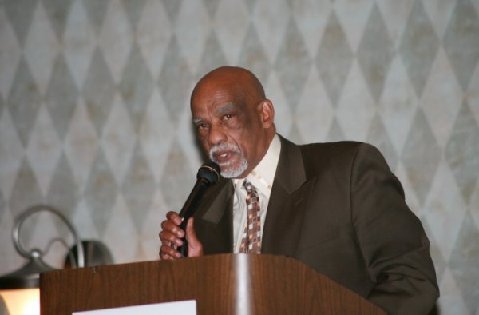
Photo: David F. Gantt, NYS 137 A.D. (New York State Assembly Member since 1983)
A Supreme Court case could radically change how districts are drawn in states nationwide.
In October, the court will hear a case and possibly decide whether 'intensely' gerrymandered districts violate the First Amendment.

The decision could have a major impact, if decided this way and would go into effect in 2020, impacting Republicans the hardest who hold majorities and control the process in many states including New York.
Redistricting is a complex aspect of state politics and for the most part, the Court has remained reactionary, some members even arguing they don’t have the jurisdiction or methodology to evaluate these cases.
“You try to represent the people,” says Assemblyman David Gantt, discussing competing interests and how it can be hard to represent everyone in a district.
In his own district, the people in the southwest region of Rochester have different interests than those in Gates.
Gantt initiated, the federal redistricting lawsuit which resulted in the creation of the 133rd New York State Assembly District and has represented that district, now renumbered to the 137th, since elected in 1982.
He fought to have the district include more of the northwest, believing these interests were more in line with his other constituents but was instead granted part of Gates.
There are many factors that go into redistricting, which can gray the line between fair apportionment and gerrymandering. For the most part, districts are drawn around people with similar interests.
This can make it easier to represent the area because the desires are similar, but can also make it easier to disenfranchise certain groups, if all are packed into one or two districts but surrounding wealthier districts are split into more, giving them more seats.
This is essentially gerrymandering: Drawing the map in party or political interests and not the people’s.
"We have to end the practice of drawing our congressional districts, so that politicians can pick their voters and not the other way around," former President Barack Obama stated in his State of the Union address.
There have been many court decisions and trials as judges feel out the gray area.
In 2010, New York heard a complaint about where inmates should be counted. Should they be included in the district where their jail or prison is located? Or should they be counted from their home address?
The Constitution is largely silent about redistricting giving judges little help.
According to 'All About Redistricting', "It has become accepted that a [redistricting] plan will be constitutionally suspect, if the largest and smallest districts [within a state or jurisdiction] are more than 10 percent apart."
This isn’t in the Constitution but for the most part, you want districts to look roughly the same and be about the same size.
There is also a focus on the community of interest, which says, districts can be drawn around people with similar political, social or economic interests.
As stated, this makes the district more uniform and easier to represent.
The Court has previously heard cases on gerrymandering, but often stuck with individual cases, deciding in 2017’s Cooper v Harris that two districts in North Carolina had been subject to illegal racial gerrymander in violation of Section 2 of the Voting Rights Act.





